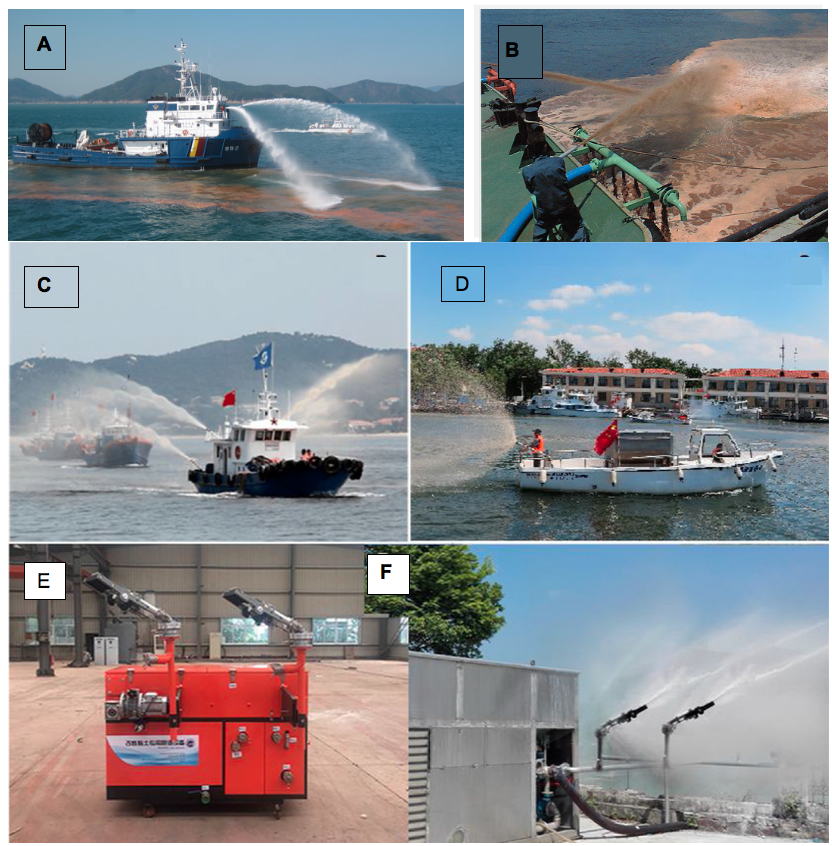Algae is often a very productive part of an ecosystem, however, harmful algal blooms (HABs) triggered by anthropogenic activity can hurt communities across the globe. Often these algal blooms are not unsafe, however some growths emit toxins into the water that are harmful to fish, shellfish, and occasionally humans. These toxic HABs have been called red tide because of the alarming reddish color that they give off in the water. Largely red tide can cause local economies to suffer from lack of tourism and the damage can even worse underwater. Scientists around the globe are eager to find ways to mitigate the effects of HABs on marine ecosystems without harming wildlife in the affected and treated areas.
One solution that has arisen for this is the approach of clay flocculation treatment . This method includes the creation of a solution of seawater and clay, which then gets sprayed over the HAB. The clay interacts with the algae by breaking apart the cells and binds to the particles of clay (National Centers for Coastal Ocean Science [NCCOS], 2024). This creates a phenomenon called flocculation, or clumping of the clay and algal particles together which in turn makes the harmful algae larger and heavier. Once clumped the particulates start to sink, no longer light enough to float on the surface or in the water column. As soon as they are on the bottom they will lose the ability to photosynthesize and most will die (National Centers for Coastal Ocean Science [NCCOS], 2024).

Spraying techniques for red tide mitigation (Woods Hole Oceanographic Institution, 2025)
The method working to rid the water column of harmful bacteria leads to the following questions: how does this affect local wildlife and how does this affect water quality?
The blue crabs of Florida are an organism that has been studied by the Woods Hole Oceanographic Institute in an attempt to understand the effects of this modified clay solution on the environment and on their populations. The tests conducted through analysis of the blue crab’s reaction to the clay treatment in smaller contained pools showed no significant health issues for the species. There were no deaths associated with the clay treatment in the study and the clay treatment was deemed safe for crab populations (NCCOS, 2024). Another study conducted focused on the environmental effects that could arise from clay flocculation treatment. The treatment in this study is shown to be effective in mitigating HABs and preventing future blooms, but also warns that over use of the treatment can cause disruptions to natural processes such as nutrient cycling. All in all, water quality and other organisms are not adversely affected by the spraying of the modified clay solution but the use of clay flocculation treatment should be monitored (Song, Zhang, & Yu, 2021).
Citations:
National Oceanic and Atmospheric Administration. (2024, June 16). What is a red tide?. National Ocean Service. https://oceanservice.noaa.gov/facts/redtide.html
National Centers for Coastal Ocean Science. (2024, January 8). Clay treatments to control red tide unlikely to harm blue crabs (Video). NOAA. https://coastalscience.noaa.gov/news/clay-treatments-to-control-red-tide-unlikely-to-harm-blue-crabs/
Xiuxian Song, Yue Zhang, Zhiming Yu,
An eco-environmental assessment of harmful algal bloom mitigation using modified clay,
Harmful Algae, Volume 107, 2021, 102067, ISSN 1568-9883, https://www.sciencedirect.com/science/article/pii/S1568988321000974
Woods Hole Oceanographic Institution. (2025). Florida red tide mitigation using clay dispersal. Anderson Lab. https://www2.whoi.edu/site/andersonlab/current-projects/florida-clay-mitigation/